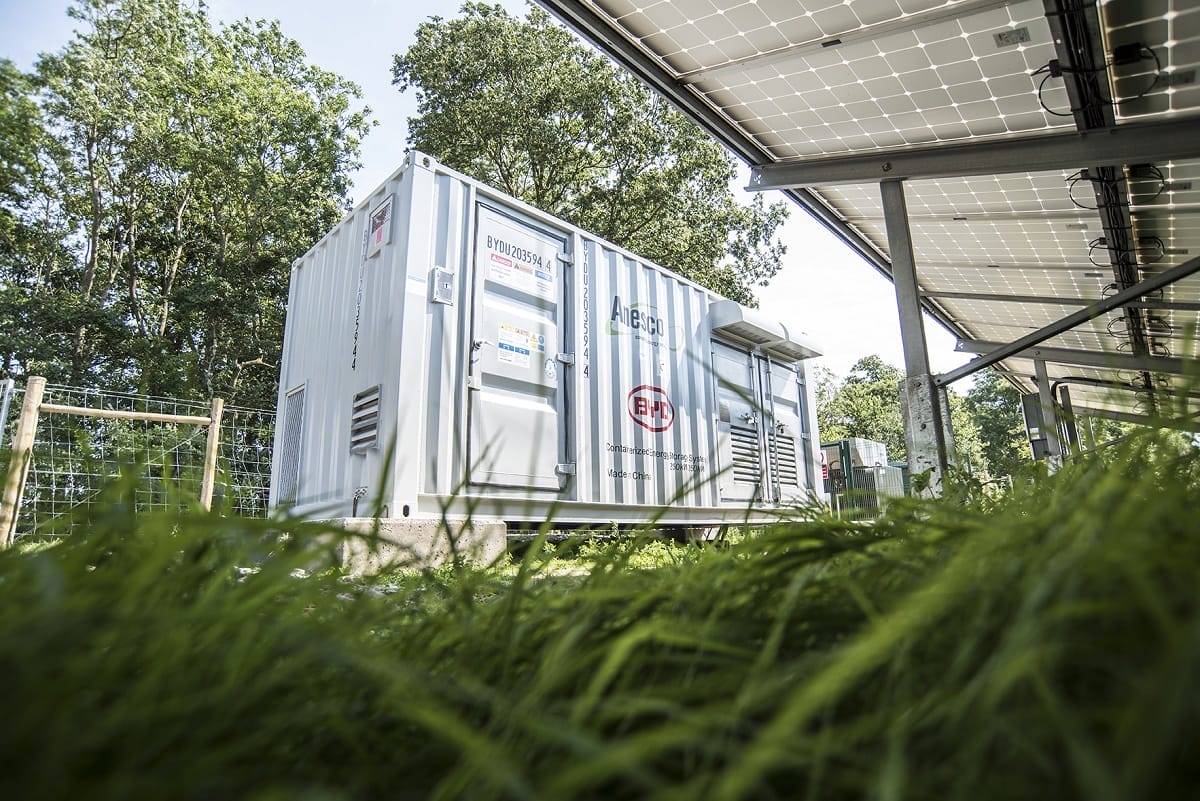Bodymoor Energy Storage Project
Anesco Limited is proposing to develop, construct, and operate a 50MW Energy Storage Project on approximately 5 acres of land, located at land at Bodymoor Heath Lane, Lea Marston CP, Marston, Warwickshire, B76 0DZ.
This development will support the UK governments pledge to end its contribution to global warming by 2050, benefitting the local and wider community now, and for generations to come.
The land at Heath Lane is suitable for a Battery storage facility because:
- It is close to a viable grid connection
- Has suitable topography and ground composition
- Is not location within an area of Natural Beauty
- Sits outside any areas of special scientific interest
- Is well screened by nearby trees and hedgerows
Furthermore, it is anticipated that additional planting and hedgerow re-enforcement will be put in place that will be managed throughout its lifespan.
Pre application advice has already been sought from North Warwickshire Council. Alongside this, an Environmental Impact Assessment (EIA) screening request has been made and determined by the council, resulting in the development not requiring an EIA.
Further detail on the proposed development is set out below
Click here to view the plans
Click here to view maps
FEEDBACK
If you are a local resident to this proposed development, please click the link below to our Feedback form:
This is your opportunity to provide your thoughts and any suggestions you may have for us. Alternatively please email the following address to share additional feedback:
Please provide any comments by 31st January 2025
PROJECT BENEFITS

Clean green technology

STORING A CAPACITY OF 50MW
saving over 11,333 tonnes of Co2 per annum

powering approximately 20,277 average uk homes
System design details
Batteries: Titan 2- Power Generating Facility registered capacity 56.82MW
Transformers: 1 x 33KV

Climate change emergency
In June 2019, the UK government became the first major economy in the world to pass laws to end its contribution to global warming by 2050. What this means is that by this date, the UK’s greenhouse gas emissions will be carbon neutral, creating a better environment now, and for generations to come.
Carbon neutral is about finding a balance between the total greenhouse gas emissions being produced, and the total emissions being removed from the environment. This commitment to becoming carbon neutral is a substantial increase on the UK’s previous target and comes at a time when pressure is building on governments to recognise and take urgent action in light of the climate emergency.
About battery technology
Battery energy storage systems have become an essential ingredient in how the UK manages and stores electricity, in particular renewable energy. An advanced green technology, they store and release electricity into the grid as required, offering energy security.
National Grid has developed a scheme, Dynamic Frequency Response, to maintain stable frequency levels thereby ensuring the electricity grid is more resistant to disruption and heavy demand at peak times. Examples of this could be in the mornings and evenings, when a power station goes off-line, or an energy intensive industry ‘comes on’. In these situations, batteries discharge the stored electricity to the grid, balancing the frequency and maintaining grid stability. Battery storage is becoming vital in ‘peak load shifting’, providing National Grid with a solution to balancing the supply and demand for electricity.
Biodiversity enhancements
The RSPB ‘State of Nature Report’ highlights the severity of the decline in British wildlife. It details that of the 8,431 species that have been assessed using regional Red List criteria, 15% have been classified as threatened with extinction from Great Britain. Climate change is driving widespread changes in the abundance, distribution, and ecology of the UK’s wildlife, and will continue to do so for decades or even centuries to come.
Solar farms present an excellent opportunity for biodiversity. The proposed solar farm will be installed on piles with minimal disturbance to the ground. The solar panels have no moving parts and the infrastructure typically disturbs less than 5% of the ground. The posts upon which the panels are mounted take up less than 1% of the land area. Because panels are raised above the ground on posts, more than 95% of a solar farm field area is still accessible for plant growth and potentially for wildlife enhancements. The proposed solar farm would have a lifespan of 40 years which is sufficient time for appropriate land management to yield real wildlife and biodiversity improvements within the local area.
A site-specific biodiversity plan will be devised to cover the lifetime of the proposed solar farm, working closely with the ecologists, and conservation organisations to ensure that the biodiversity enhancements are most appropriate to the local area.
FREQUENTLY ASKED QUESTIONS
How long will it take to construct the BESS project?
30-34 weeks including the site set-up and site clearance.
Does battery storage make any noise?
Only the cooling system of the ESS generates noise, an emission of less than 66db at 1m from the unit. The noise dissipates rapidly from source and will not be audible outside of the field boundary. The development undergoes a noise assessment to ensure any noise made is below the ambient noise of its surroundings.
Is battery technology safe?
The Lithium-Iron Phosphate battery modules – a well-established battery technology found in a huge range of electrical devices – are in sealed containerised units which are safe to use, providing long life. Each container has a cooling system together with a fire control system to ensure safety. At the end of their productive life the batteries can be safely recycled.
How will the site be accessed?
The site will be accessed off Bodymoor Heath Road. This is intended to be the access during both construction and for ongoing maintenance services.
Does battery storage require a lot of maintenance?
No, maintenance is very limited and usually involves 1 visit per month by two operatives who attend site with a van.
What happens at the end of the 40 year term?
The batteries will be decommissioned, recycled and all equipment removed. The site will be returned to its former state unless in the future it was agreed with the local planning authority that the term could be extended.

Creating a better future
Download your free guide to find out why we need renewable energy.


